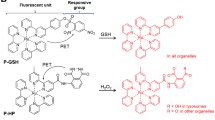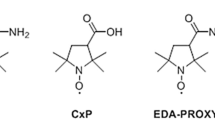Abstract
It has been proposed that xanthine oxidase-derived superoxide mediates reperfusion injury in the liver; however, there is a little direct evidence to support this hypothesis. In this paper we describe a model system to directly and noninvasively measure oxyradical formation and hepatic injury in isolated perfused rat liver. Using this sensitive chemiluminescent technique, we clearly demonstrate the theorized burst in oxygen radical production upon reperfusion of previously ischemic liver, without perturbing the system with chemical luminescence enhancers. This increase in chemiluminescence (CL) upon reperfusion was diminished by the free radical scavengers trolox and ascorbate, as well as N-2-mercaptoproprionyl-glycine (MPG), thereby confirming the oxyradical nature of this signal. Additionally, superoxide dismutase and the xanthine oxidase inhibitor allopurinol, but not catalase, attenuated the reperfusion effect, providing the most direct evidence so far that XOD derived superoxide anion is formed during liver reperfusion. Hepatic injury (AST release) did not appear to relate to increased CL, supporting the notion that the oxyradical flux may serve as a signal for other events leading to tissue injury. Further studies using this sensitive chemiluminescent technique should aid in delineating the detailed mechanism(s) of reperfusion injury.
Similar content being viewed by others
References
McCord JM: Oxygen-derived free radicals in postischemic tissue-injury. N Engl J Med 312(3):159–163, 1985
Adkison D, Hollwarth ME, Benoit JN, Parks DA, McCord JM, Granger DN: Role of free radicals in ischemia-reperfusion injury to the liver. Acta Physiol Scand Suppl 548:101–107, 1986
Jaeschke H: Glutathione disulfide as index of oxidant stress in rat liver during hypoxia. Am J Physiol 258:G499-G505, 1990
Cadenas E, Boveris A, Chance B: Low level chemiluminescence of biological systems.In Free Radicals in Biology. WA Pryor (ed). New York, Academic Press, 1984, pp 211–242
Cadenas E, Sies H: Low-level chemiluminescence as an indicator of singlet molecular oxygen in biological systems.In Oxygen Radicals in Biological Systems. L Packer (ed). New York, Academic Press, 1984, pp 221–231
Murphy ME, Sies H: Visible-range low-level chemiluminescence in biological systems.In Oxygen Radicals in Biological Systems. L Packer, AN Glazer (ed). New York, Academic Press, 1990, pp 595–610
Kumar C, Okuda M, Chance B: Luminol enhanced chemiluminescence of the perfused rat heart during ischemia and reperfusion. FEBS Lett 272(1,2):121–124, 1990
Okuda M, Ikai I, Chance B, Kumar C: Oxygen radical production during ischemia-reperfusion in the isolated perfused rat liver as monitored by luminol enhanced chemiluminescence. Biochem Biophys Res Commun 174(1):217–221, 1991
Okuda M, Lee H-C, Chance B, Kumar C: Depletion and repletion of Ca++ in the perfused rat liver. J Lab Clin Med 120(1):57–66, 1992
Okuda M, Lee H-C, Chance B, Kumar C: Role of extracellular Ca+2 in ischemia-reperfusion injury in the isolated perfused rat liver. Circ Shock 37:209–219, 1992
Okuda M, Lee H-C, Chance B, Kumar C: The effect of ruthrnium red during Ca+2 depletion and repletion in the isolated perfused rat liver. Res Commun Chem Pathol Pharmacol 78(1):17–25, 1992
Okuda M, Lee H-C, Chance B, Kumar C: Comparison of the effect of a mitochondrial uncoupler, 2,4-dinitrophenol and adrenaline on oxygen radical production in the isolated perfused rat liver. Acta Physiol Scand 145:159–168, 1992
Cadenas E, Varsavsky AI, Boveris A, Chance B: Oxygen-or organic hydroperoxide-induced chemiluminescence of brain and liver homogenates. Biochem J 198:645–654, 1981
Cohen PJ: Allopurinol administered prior to hepatic ischaemia in the rat prevents chemiluminescence following restoration of circulation. Can J Anaesth 39(10):1090–1093, 1992
Gonzalez-Flecha B, Cutrin JC, Boveris A: Time course and mechanism of oxidative stress and tissue damage in rat liver subjected toin vivo ischemia-reperfusion. J Clin Invest 91:456–464, 1993
Roldin, EJA, Pinus CR, Turrens IF, Boveris A: Chemiluminescence of ischemic and reperfused intestinein vivo. Gut 30:184–187, 1989
Vladimirov YA, Atanayev TB, Sherstnev MP: Enhancement of chemiluminescence associated with lipid peroxidation of rhodamine dyes. Free Radic Biol Med 12:43–52, 1992
Caraceni P, Gasbarrini A, Van Thiel DH, Borle AB: Oxygen free radical formation by rat hepatocytes during postanoxic reoxygenation: scavenging effect of albumin. Am J Physiol 266(3 Pt 1):G451-G458, 1979
Henry TD, Archer SL, Nelson D, Weir EK, From AHL: Postischemic oxygen radical production varies with duration of ischemia. Am J Physiol 264:H1478-H1484, 1993
Archer SL, Nelson DP, Weir EK: Detection of activated O2 speciesin vitro and in rat lungs by chemiluminescence. J Appl Physiol 67(5):1912–1921, 1989
Amaya Y, Yamazaki K-I, Sato M, Noda K, Nishino T: Proteolytic conversion of xanthine dehydrogenase from the NAD-dependent type to the O2-dependent type. J Biol Chem 265(24):14170–14175, 1990.
Jaeschke H, Smith CV, Mitchell JR: Reactive oxygen species during ischemia-reflow injury in isolated perfused rat liver. J Clin Invest 81:1240–1246, 1988
Metzger J, Dore SP, Lauterburg BH: Oxidant stress during reperfusion of ischemic liver: No evidence for a role of xanthine oxidase. Hepatology 8(3):580–584, 1988
Brass, CA, Narciso J, Gollan JL: Enhanced activity of the free radical producing enzyme xanthine oxidase in hypoxic rat liver. J Clin Invest 87:424–431, 1991
Mitsos SE, Fantone JC, Gallagher KP, Walden KM, Simpson PJ, Abrams GD, Schork MA, Lucchesi BR: Canine myocardial reperfusion injury: protection by a free radical scavenger N-2 mercaptoproprionyl glycine. J Cardiovasc Pharmacol 8:978–988, 1986
Jaeschke H, Smith CV, Mitchell JR: Hypoxic damage generates reactive oxygen species in isolated perfused rat liver. Biochem Biophys Res Commun 150(2):568–574, 1988
Gollan JL, Hammaker L, Licko V, Schmid R: Bilirubin kinetics in intact rats and isolated perfused liver. J Clin Invest 67:1003–1015, 1981
Burk RF, Hill KE: Use of perfused organs in measurement of drug-Induced oxidant stress.In Oxygen Radicals in Biological Systems. L Packer, AN Glazer (ed). New York, Academic Press, 1990, pp 759–766
Roll FJ, Perez HD, Serhan CN: Characterization of a novel arachidonic acid-derived neutrophil chemoattractant. Biochem Biophys Res Commun 186(1):269–276, 1992
Koo A, Komatsu H, Tao G, Inoue M, Guth PH, Kaplowitz N: Contribution of no-reflow phenomenon to hepatic injury after ischemia-reperfusion: Evidence for a role for superoxide anion. Hepatology 15(3):507–514, 1992
Jaeschke H, Farhood A, Smith CW: Neutrophils contribute to ischemia/reperfusion injury in rat liverin vivo. FASEB J 4:3355–3359, 1990
Suzuki M, Inauen W, Kvietys PR, Grisham MB, Meininger C, Schelling ME, Granger HJ, Granger DN: Superoxide mediates reperfusion-induced leukocyte-endothelial cell interactions. Am J Physiol 257:H1740-H1745, 1989
Komatsu H, Koo A, Ghadishah E, Zeng H, Kuhlenkamp JF, Inoue M, Guth PH, Kaplowitz N: Neutrophil accumulation in ischemic reperfused rat liver: Evidence for a role for superoxide free radicals. Am J Physiol 264(4 Pt 1):G669-G676, 1992
Jaeschke H, Mitchell JR: Use of isolated perfused organs in hypoxia and ischemia/reperfusion oxidant stress.In Oxygen Radicals in Biological Systems. L Packer, AN Glazer (ed). New York, Academic Press, 1990, pp 752–759
Jaeschke H: Vascular oxidant stress and hepatic ischemia/reperfusion injury. Free Radic Res Commun 12–13:737–743, 1991
Hoshino T, Maley WR, Williams GM, Bulkley GB: The effect of oxypurinol in preventing free radical-mediated reperfusion injury in cold-preserved kidneys.In 4th biennial general meeting of the Society for Free Radical Research. Elsevier Science Publishers, Kyoto, Japan, 1989
Darr D, Fridovich I: Free radicals in cutaneous biology. J Invest Dermatol 102:671–675, 1994
Zweier JL, Kuppusamy P, Williams R, Rayburn BK, Smith D, Weisfeldt ML, Flaherty JT: Measurement and characterization of postischemic free radical generation in the isolated perfused heart. J Biol Chem 264(32):18890–18895, 1989
Arroyo CM, Kramer JH, Cickens BF, Weglicki WB: Identification of free radicals in myocardial ischemia/reperfusion by spin trapping with nitrone DMPO. FEBS Lett 221(1):101–104, 1987
Kramer JH, Arroyo CM, Dickens BF, Weglicki WB: Spin-trapping evidence that graded myocardial ischemia alters post ischemic superoxide production. Free Radic Biol Med 3(2):153–159, 1987
McKelvey TG, Hollwarth ME, Granger DN, Engerson TD, Landler U, Jones HP: Mechanisms of conversion of xanthine oxidase dehydrogenase to xanthine oxidase in ischemic rat liver and kidney. Am J Physiol 254:G753-G760, 1988
Wiezorek JS, Brown DH, Kupperman DE, Brass CA: Rapid conversion of high xanthine oxidase activity in viable Kupffer cells during hypoxia. J Clin Invest 94:2224–2230, 1994
Jaeschke H, Mitchell JR: Mitochondria and xanthine oxidase both generate reactive oxygen species in isolated perfused rat liver after hypoxic injury. Biochem Biophys Res Commun 160(1):140–147, 1989
Author information
Authors and Affiliations
Additional information
C. A. Brass was the Hans Popper Liver Scholar of the American Liver Foundation (1989–1993). Supported in part by a VA Merit Review Award and NIH training grant 5-21643 (F.A. Nunes). Presented in part at the annual meeting of the American Association for the Study of Liver Disease, November, 1992.
Rights and permissions
About this article
Cite this article
Nunes, F.A., Kumar, C., Chance, B. et al. Chemiluminescent measurement of increased free radical formation after ischemia/reperfusion. Digest Dis Sci 40, 1045–1053 (1995). https://doi.org/10.1007/BF02064197
Received:
Revised:
Accepted:
Issue Date:
DOI: https://doi.org/10.1007/BF02064197




